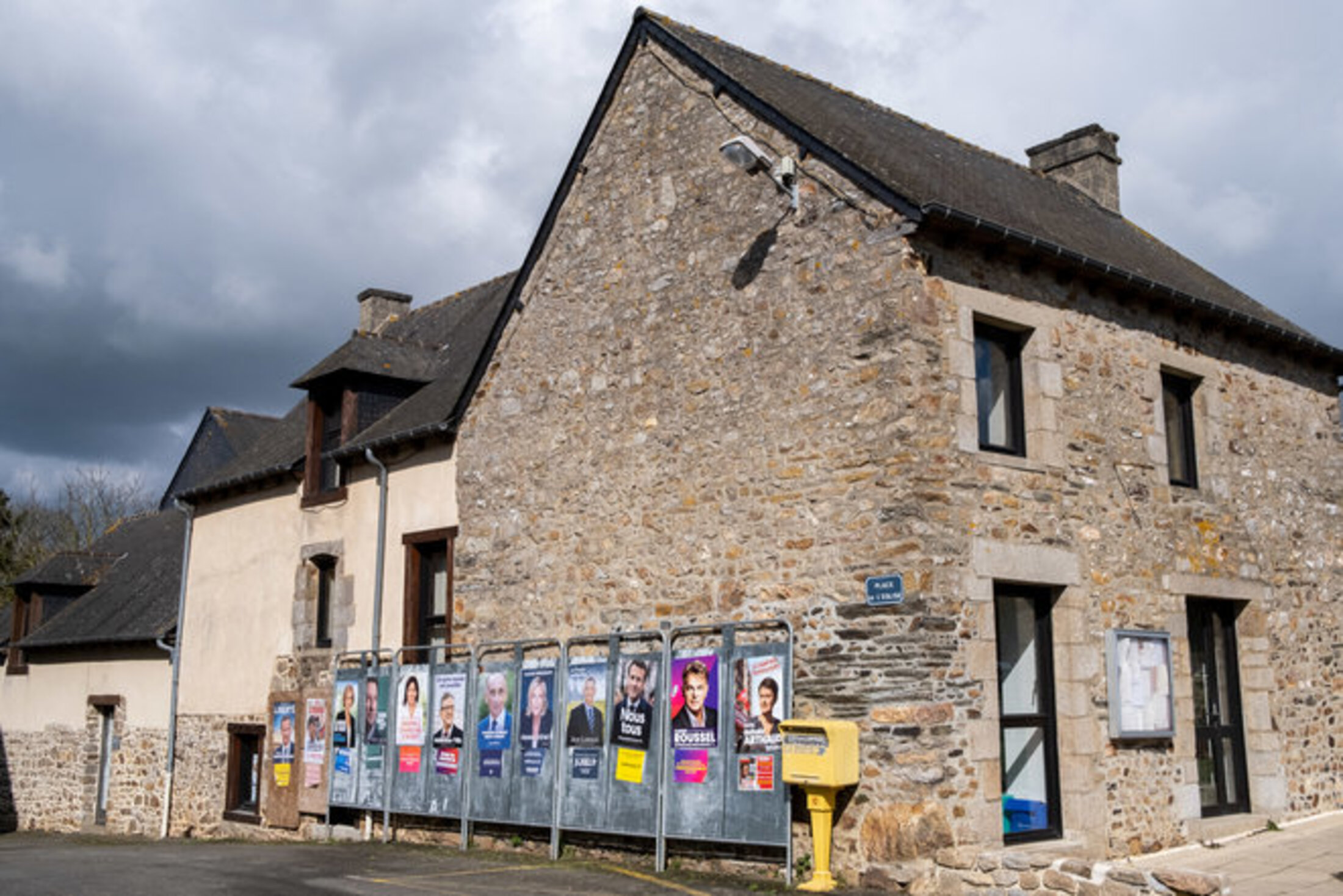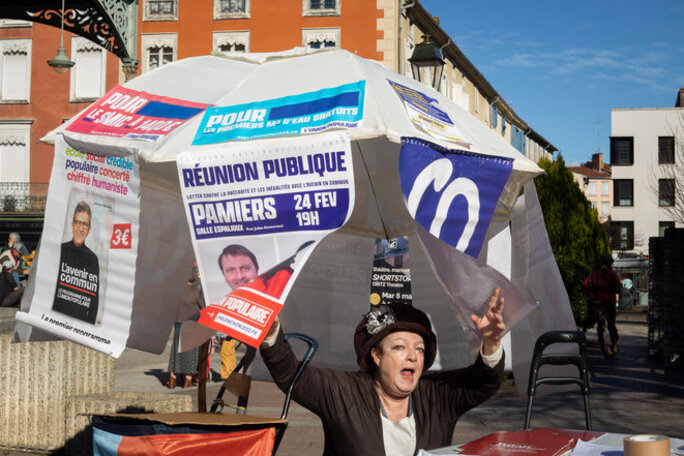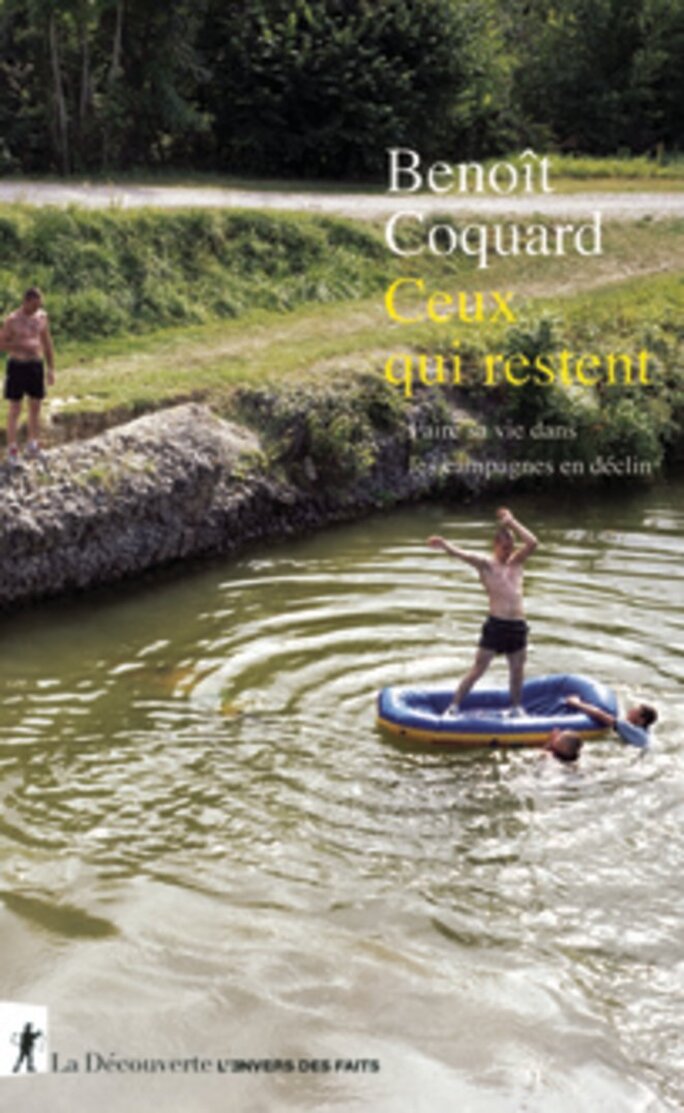Rural France is socially, as well as geographically, diverse, with many areas in economic and demographic decline, while others enjoy a more dynamic economic environment, with wealthier social categories amid their populations. But within all this, political affiliations are even more varied, and complex, as illustrated by the results of the first round of voting earlier this month in France’s presidential elections.
As the decisive second round approaches, in a duel between the far-right candidate Marine Le Pen and the incumbent centre-right Emmanuel Macron, Mediapart sought an insight into the voting patterns of rural France from sociologist Benoît Coquard, a researcher with the country’s National Research Institute for Agriculture, Food and Environment, INRAE, and the author of Ceux qui restent. Faire sa vie dans les campagnes en déclin ('Those who remain. Living in a countryside in decline'), published in 2019. He is interviewed here by Amélie Poinssot.
--------------------
Mediapart: Given the results of the first round of the presidential elections on April 10th, can one characterise the vote in rural areas and that in peri-urban areas?
Benoît Coquard: For the moment I only have the results at a municipal level or by département [editor’s note, an administrative area, similar to a county]. What we need is data on a scale of living zones, of employment zones, and above all with regard to social classes and generations.
What I can say, at first glance, is that the tendency of previous elections is confirmed in rural environments, with differences according to types of countryside. There is a higher vote for the far-right outside of large urban areas, and even more so in rural areas which are in economic and demographic decline. There’s nothing new here, since the 1990s we have seen this development of the far-right in de-industrialised country areas, where there is also an over-representation of less [educationally] qualified people, who we know vote more than others for the far-right.

Enlargement : Illustration 1

The vote for [maverick far-right candidate, Eric] Zemmour appears sociologically different to that for the Rassemblement National [RN, the former Front National, and led by Marine Le Pen]. He managed better in penetrating the well-off classes and the wealthy districts of large towns and cities rather than in those places where Marine Le Pen already had hegemony.
A marked event in conservative rural areas is the collapse of [this year’s conservative Les Républicains party candidate] Valérie Pécresse in comparison to [her predecessor] François Fillon in 2017. Among the young adults who I study, there is also a new dynamic for [radical-left candidate, Jean-Luc] Mélenchon, but that vote appears to me to be admitted to in public very little. It’s complicated to say that one is ‘on the Left’ in certain rural areas.
Finally, there is a rise in abstentions which, among the young rural community will certainly be even greater in the second round.
Mediapart: In some regions, the RN’s Marine Le Pen did come in first place, and in a west-to-east curve across southern France, from the Occitanie region to that of the Hautes-Alpes, via the Ardèche and the Drôme, Jean-Luc Mélenchon came first in many villages, some of them geographically very isolated.
B.C.: The vote obviously varies according to the type of rural area, because there is not everywhere a same type of social class or social morphology. In those zones you point out as being for Mélenchon, there are attractive rural areas with a more [educationally] qualified population, and a not insignificant number of new ruralists.
Also, if one looks at the municipalities where Mélenchon came in first place, very often it’s the RN [Marine Le Pen] which is just behind. That is the case in Occitanie. One must also be wary of making a hasty interpretation of the maps [of election results] by municipality. One sees the colour red and assumes that Mélenchon was handsomely elected in one zone or another, but all that has to be compared with the numbers of inhabitants, and gather together the different municipalities, in order to be able to understand what is really happening.
Nevertheless, one must keep in mind that rural areas have different local political stories, and that there is not only the post-industrial profile of the regions of the Est [East] and the Nord [North].

Enlargement : Illustration 2

In the dynamic country areas in the west of France, qualified young adults return to settle there because they are close to large urban centres. Rural Brittany, for example, gives a lot of votes to Emmanuel Macron, but also to Jean-Luc Mélenchon. There is also less abstention, because there is a smaller number of the working class, less social insecurity and, more largely, a better-off and educated population which feels it is more legitimate to go and vote.
In order to figure out the vote for Marine Le Pen in country areas it is therefore imperative to avoid a simply binary interpretation between ‘rural’ and ‘urban’. To understand the vote and the sense that is given by it, one must travel to the area and observe which are the groups living there and how they mix together.
If, for example, workers are more in contact with an anti-RN local middle-class, closer to a cultural pole of activity than an economic one, and where there is a strong amount of community life, then the vote for the RN is less legitimate and certainly less strong. The spirit in such places will not be the same as in rural areas which are in decline, where the local socially dominant vote for the Right or the far-right and stigmatise the Left and its values.
Today’s RN result comes, for a large part, from working classes living in rural areas which have always voted for the Right and where, even in the grand old days of the PCF [French Communist Party], workers have continued in large part to vote ‘for the boss’.
It is in that respect that I say that rural areas vote differently according to their social morphology, and that is the case certainly among the elderly population. It would for example be useful to see where the retired who don’t vote for Macron are. A retired person in a conservative country area in the Est won’t vote like another retired person who is in the [south-west département of] l’Ariège, because the political climate and the groups they interact with are no doubt not all the same.

Enlargement : Illustration 3

In places like the Drôme and the Ardèche, there is more valorisation of local agricultural production, and they attract a lot of people from outside the rural world who succeed in creating their own activity. On the opposite, in the countryside around the Grand Est [region], where the agriculturally active population is very small, where vast crop fields and intensive agriculture are dominant, and where employment is above all provided by the metallurgic industry, the relationship with the countryside is not at all the same.
Mediapart: In rural areas where there are distances to travel to get to urban centres, where the provision of public transport is receding, and where people spend a lot of time on the road, does that contribute to a feeling of isolation and subsequent lack of interest in politics?
B.C.: Yes, you are right. For these people, ‘everything is far away’ as they say, yet you still need to get to work. It’s something I underlined in my book; the older generation talk about how, when they were young, they could ‘do everything by bicycle’, that everything was within reach – work, services even one’s future spouse. Today, the perimeters of daily life are very wide and soon reach 50 kilometres. The younger ones I see know that their salary, for a large part, goes into petrol.
In that context, Marine Le Pen is perceived as the one who taxes the least, as someone who will block the [rising] costs of petrol. Also – and this for me is a determining factor for not positioning oneself on the Left if one is a worker – the working-class rural population have a high price to pay to become a house owner, and those who have a house have the feeling of being a bit above average, and want to preserve and pass down this small patrimony without paying taxes.

Enlargement : Illustration 4

It is impossible for me to say how those who were among the ‘yellow vest’ movement voted. Already, during the movement, you could observe how, in a same [small] municipality, one roundabout [roundabouts became the symbolic, regular site for protests] was leaning more to the Left while another was dominated by individuals from the far-right. In his article Rencontres aux ronds-points, the sociologist Raphaël Challier explained very well this polarisation within a small town in the Vosges [in north-east France]. Political polarisations existed within the movement. There were also probably differences between those ‘yellow vests’ who had suffered from police repression and those, very many, who only took part during the first weeks of the blockades.
There, also, it is very likely that a large section abstained [from this month’s voting], whereas these people became strongly politically engaged via the movement. Voting does not represent everything in politics, above all not for the working classes.
Mediapart: Have the traditional French political parties, along with the radical-left La France Insoumise party, failed to communicate with the rural world?
B.C.: It always appears to me to be unsound to evoke a specific rural vote, as if it were a quite different reality, a population that is by nature different from others. The principal problem of the rural electorate and the working classes is purchasing power. This is the common point with these [same] social classes that live elsewhere than in rural areas.
What is certain is that among the traditional parties there is no candidate who, by their ethos, by their way of speaking, their accent, show that they come from a rural and working-class social category. Aside from the issue of political affinity with one ideology or the other, a home-help assistant who works in a rural environment has hardly any possibility of identifying themselves with [conservative candidate] Valérie Pécresse.
It is also on that empty space that Marine Le Pen plays. She is ‘the one who says out loud that things are cracking up everywhere’, to sum up what I was told by the young [adults], who regarded her as being ‘in the real world’. It’s a line of talk that echoes with people who experience heightened competition for work, and conflicts at a local level in the context of the generalisation of social insecurity.
-------------------------
- The original version of this interview conducted in French can be found here.
This abridged English version by Graham Tearse


